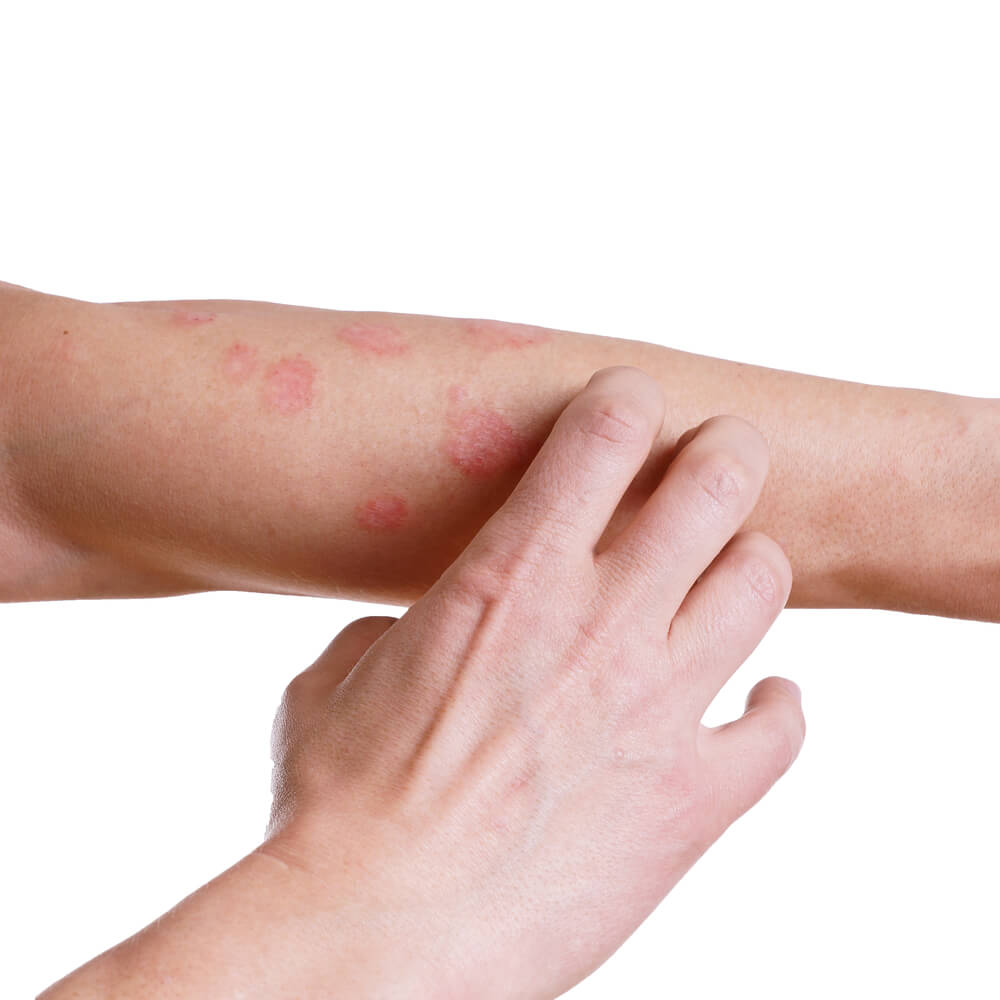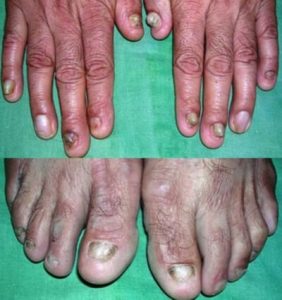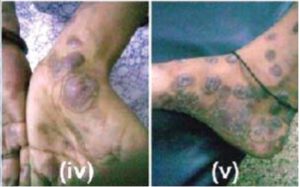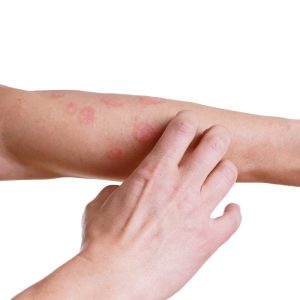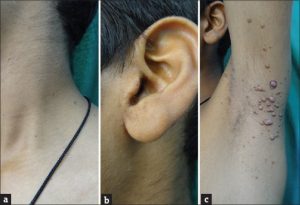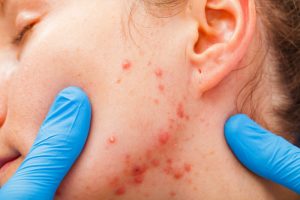Authors:
Irena Angelova-Fischer MD, Department of Dermatology, University of Medicine, 1 S.G.Sofiiski Blvd, 1431 Sofia, Bulgaria.
Citation
Irena Angelova-Fischer Acta Dermatovenerol Alp Pannonica Adriat. 2005 Sep;14(3):115-9.
Introduction
A 19-year old woman with severe flare-up of atopic dermatitis came for consultation at the Department of Dermatology, University of Medicine-Sofia in March 2003. She had a history of atopic eczema since early years. The manifestation of the disease was relatively mild and managed using topical steroid preparations.
History
In the last 3 years, relapses became frequent and difficult to manage with topical treatment. The exacerbation on admission to the hospital was triggered to weeks earlier by a depot corticosteroid injection administered by a general practitioner. It was after the failure of treatment with a potent topical corticosteroid preparation. Allergic asthma had been diagnosed at the age of 5 years, and rhinitis at the age of 9 years. She also had a family history for atopic dermatitis. On admission, 78% (estimated by the rule of the 9s) of the body was affected and the SCORAD index was 70.6.
Symptoms
Redness and symmetrically distributed oozing was most severely pronounced on the cheeks, the neck, the supra and infraclavicular area, the cubital and popliteal folds as well as the volar surfaces of the forearms. Numerous excoriations on the trunk and extremities were seen. The patient reported severe pruritus and fatigue.
Examination and treatment
During examination, everything was within a normal range except the elevated total serum IgE 2470 IU/ml. As an alternative to treatment with systemic corticosteroids, montelukast sodium tablets were administered in a single daily oral dose of 10 mg for 8 weeks. There was a significant improvement of the patient’s condition at the end of the first week, and was most pronounced for the erythema, exudation and pruritus. The Severity Scoring Atopic Dermatatis (SCORAD) index reduced to 34.6 by day 10. The remission was stable and the patient did not present any exacerbation in the course of the follow-up examinations (up to a total of 6 months).

